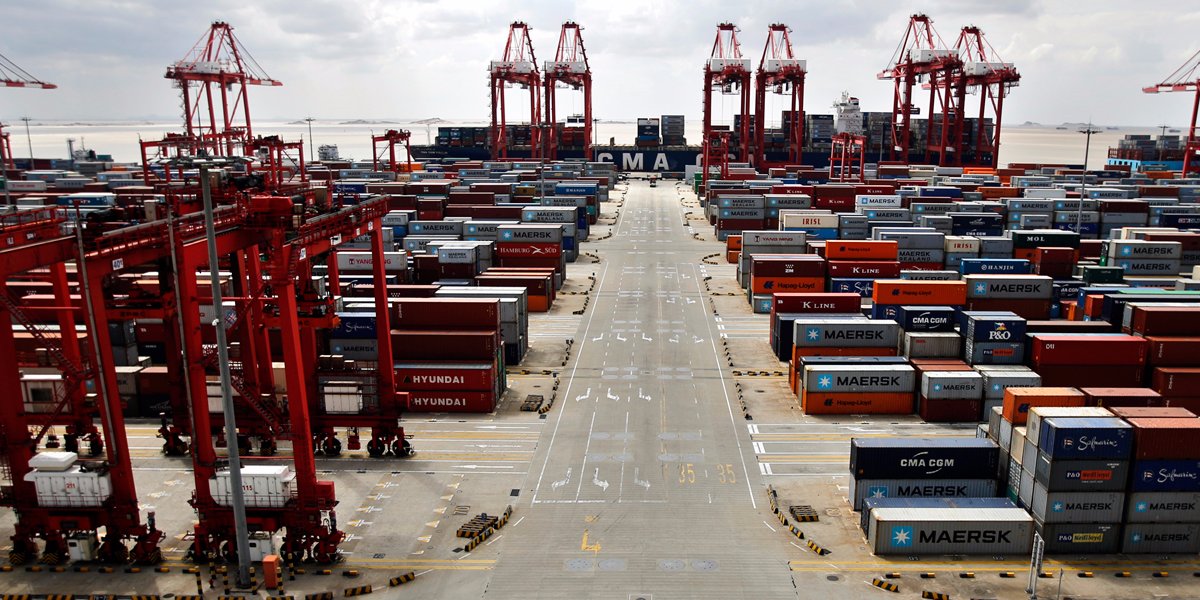
BEIJING – China’s economy got an another boost from a foreign trade last month, with exports posting modest growth, though the recent surge in the yuan’s value is starting to weigh on Chinese exporters.
China’s exports increased 5.5% from a year earlier in August, according to customs data released Friday. Some economists said the pace, while lower than July’s 7.2% rise and the 6.0% forecast in a poll of economists, is steady enough to help prop up growth in the world’s second-largest economy.
“Despite being slightly lower than expectations, the export data reflect that external demand is holding up pretty well so far this year, thanks to a recovery in global growth,” said Ding Shuang, an economist with Standard Chartered. He said exports would be positive for “the growth of the Chinese economy in the months ahead.”
Imports expanded 13.3% in August from a year earlier, more robust than the 11.0% gain in July or the 10.0% gain expected in the poll. The faster growth of imports, coupled with a moderating rise in exports, narrowed China’s surplus to $41.99 billion in August, from $46.74 billion in July.
The rebound in exports this year was a contributing factor in lifting the Chinese economy to a stronger-than-expected performance for the first half of the year. While less important to China’s growth than a decade ago, trade still has an impact. For much of the past two years, lackluster global demand has dragged down China’s growth.
Now, China is benefiting from a recovery in its major markets. “Wherever you look at–the U.S., EU or Japan–external demand is still robust,” said Jian-Guang Shen, an economist at Mizuho Securities. He expects China’s exports to grow more than 5% this year, compared with a 7.7% decline in 2016.
Shipments to the U.S., China’s biggest export market, held steady at 8.45% in August, according to the customs data. Exports to Southeast Asian countries accelerated to 6%, while shipments to the European Union dropped to 5.2% last month, official data showed.
A recent surge in the yuan, however, is likely to crimp a further expansion of China’s exports, economists said. The yuan soared 2% against the U.S. dollar in August alone, marking its biggest monthly gain since July 2005. The currency hit its highest level in more than 20 months this week, recovering from the entire 6.6% decline recorded last year.
Chen Lin, a general manager at Hefei DGCT Imp. & Exp. Co. Ltd., which exports pet toys, said the soaring yuan is squeezing his business with the U.S. and EU, where his business is settled in dollars.
“The impact is simple and clear. It means a loss for us. If we can bargain with our clients and raise our price by 5%, that may help. If not, we can only bear the losses. There’s nothing we can do about it,” Mr. Chen said.
Mr. Shen, with Mizuho Securities, said further appreciation of the yuan is likely to prod the central bank to intervene, “if it is not intervening in the market already.”
Imports also aren’t likely to sustain the recent pace of expansion, economists said, because government efforts to cool the property market and to reduce debt and financial risks are having an impact on demand at home.
“Looking ahead, we think further downside to export growth should be limited by the fairly positive outlook for China’s main trading partners. But with the headwinds to domestic demand from policy tightening increasing, we think the slowdown in import growth has further to run,” said Julian Evans-Pritchard, an economist with Capital Economics.








